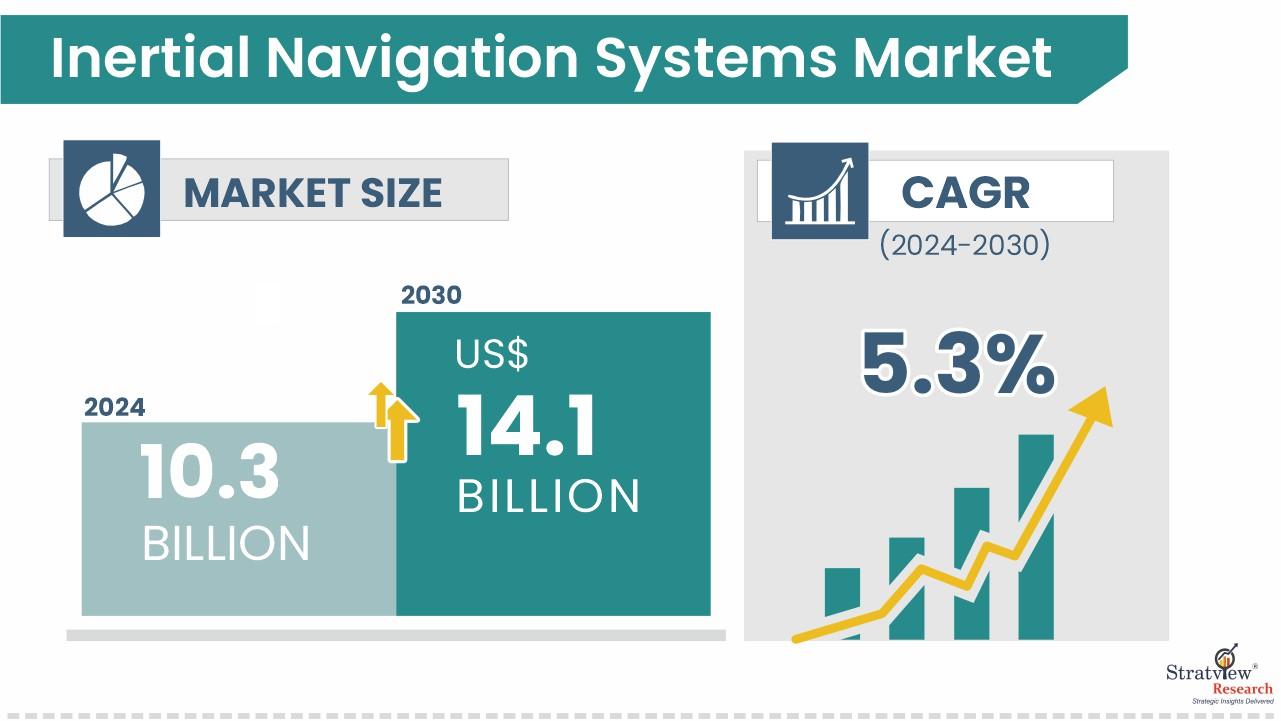Strategic Outlook & Trends in the Inertial Navigation System Market

Inertial Navigation Systems (INS) are being adopted more widely as industries and defense sectors seek highly accurate, self-reliant navigation solutions. Stratview Research projects the Inertial Navigation Systems Market to grow at ~5.30% CAGR from 2025-2032, building on a 2024 base of USD 10.3 billion.
Request the Sample Report Here:
https://www.stratviewresearch.com/Request-Sample/4022/inertial-navigation-systems-market.html#form
Drivers
- Demand in military and defense modernization: Governments worldwide are investing in precise navigation for fighter jets, missile systems, naval vessels, and unmanned platforms. Reliability and resistance to external signal failure are key.
- Autonomy and unmanned/uncrewed platforms: Whether drones, rovers, submarines, or autonomous cars, these platforms need INS for navigation when GNSS isn’t reliable or unavailable.
- Technological innovation reducing size, cost, power: MEMS and new gyroscope technologies are making INS lighter and more affordable. Increased reliability and better algorithms help reduce drift and error.
- Aerospace & commercial aviation resurgence: Post-COVID-19 recovery in aircraft purchases, space missions, and satellite launches is contributing to higher demand. In commercial aviation, more precise navigation for efficiency and safety is being stressed.
Trends
- Shift to higher performing gyro technologies: While MEMS dominates many lower- and mid-range applications, FOG, RLG, and even newer optical/photonic gyros are being deployed in premium, high-precision, or long-duration missions.
- Convergence of INS with GNSS and other sensor systems: Hybrid systems, tightly-coupled navigation, or sensor fusion (e.g. integrating magnetometers, vision/sight, LiDAR) to improve segmentation-drift and improve performance in challenging conditions.
- Focus on robustness, calibration, drift compensation: Because INS by nature drift over time, there’s a push for better calibration, better error correction algorithms, thermal stability, etc.
- Expansion across applications beyond aerospace: Marine navigation, automotive (especially autonomous and safety-critical systems), industrial robotics, and even agriculture are adopting INS. This broadens the market.
Conclusion
INS is no longer niche; it is becoming essential across many sectors due to its ability to maintain navigation in GPS-denied or compromised environments. The market’s projected size (USD ~10.3B in 2024) and steady growth (~5-6% CAGR to 2032) show both opportunity and challenge.
Firms that deliver accuracy, compactness, cost-effectiveness, and reliability will lead. Also, focusing on sensor fusion, error compensation, new gyro technologies, and penetrating growing markets in Asia-Pacific will be vital. As autonomy, defense, aerospace, and marine applications proliferate, the INS market is set to play a foundational role in how machines and vehicles navigate in an increasingly complex and signal-uncertain world.
- Art
- Causes
- Crafts
- Dance
- Drinks
- Film
- Fitness
- Food
- Παιχνίδια
- Gardening
- Health
- Κεντρική Σελίδα
- Literature
- Music
- Networking
- άλλο
- Party
- Religion
- Shopping
- Sports
- Theater
- Wellness




